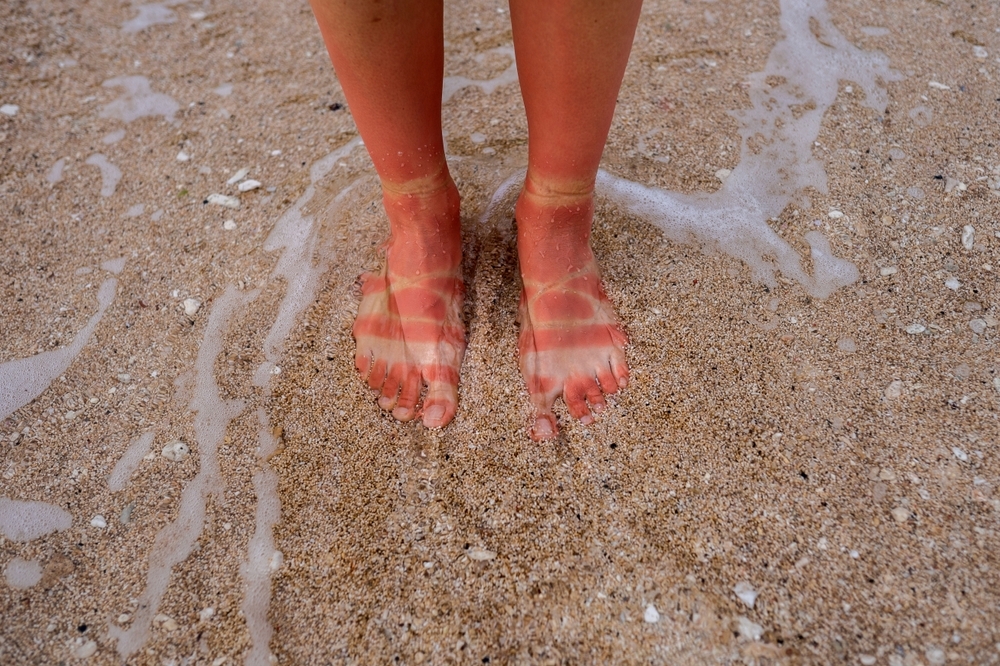You took an extended midday siesta at the beach, skipped sun protection on a cloudy day, or forgot to reapply sunscreen on your last vacation. Most people can share at least one story about their most unpleasant experience with sunburn, and the worst sunburns tend to be memorable. They hurt, look unsightly, and take seemingly forever to fade. But not all sunburns are created equal.
Severe sunburns can affect your skin health and physical well-being. It's important to recognize when you have one and know how to treat a severe sunburn when it strikes.
Identifying a Severe Sunburn
Sunburns are caused by overexposure to ultraviolet (UV) radiation from the sun, which damages your skin cells and triggers inflammation. Most sunburns are mild and classified as first-degree burns, which affect the most superficial layer of your skin (the epidermis). With a mild sunburn, your skin often becomes pink or red, and you may experience tenderness, mild swelling, warmth, itchiness, and dryness with peeling.
Second-Degree Sunburn
So, what makes a severe sunburn different? When your skin has had enough exposure to UV radiation to cause damage to its deeper layers, you're left with a severe sunburn. Most severe sunburns are classified as second-degree burns, which extend to the second layer of the skin (the dermis) and often cause sun blisters. You may also experience more pronounced redness, swelling, pain, warmth, and peeling than you would with a mild sunburn. In some cases, your skin may develop a wet or shiny appearance.
Third-Degree Sunburn
Though rare, it's possible to get a third-degree sunburn, which severely damages all layers of the skin and the fat beneath. A third-degree sunburn can cause nerve damage, so it may not be painful, and it typically doesn't blanch (or turn white) when pressed. Your skin may also become swollen, dry, and leathery and develop areas of white, deep red, brown, or black discoloration.
When to See Your Doctor for Severe Sunburn Relief
A third-degree sunburn requires immediate medical attention and treatment. Sun poisoning, which refers to a series of symptoms associated with severe sunburn, also means a trip to the doctor. Signs of sun poisoning may include:
- Fever
- Chills
- Headache
- Dizziness
- Fainting
- Lethargy
- Nausea
- Confusion
- Dehydration
If you experience any of these symptoms or any signs of a third-degree sunburn, seek medical care right away. The same goes for if you have large blisters, blisters on sensitive areas of your body (e.g., face, hands, feet, genitals), blisters with pus or red streaks, and significant skin swelling, pain, or rashes.
How to Treat a Severe Sunburn
In addition to seeking medical care as needed, you can take steps to support severe sunburn relief:
- Seek indoor shelter and avoid further sun exposure until your skin heals.
- Stay hydrated to help prevent dehydration and restore fluid loss.
- Apply a cold compress (but never ice) to sunburned skin and take frequent cool showers or baths.
- Use mild cleansers and apply a gentle, fragrance-free lotion to moisturize your skin after bathing.
- Take a non-steroidal anti-inflammatory medication like ibuprofen to help calm skin inflammation.
If you have blisters, avoid popping or picking at the skin around them. Blisters provide a natural barrier against infection as the skin beneath heals. Cover blistered areas, especially any that pop on their own, with a gentle nonstick bandage and gauze for an added layer of protection and to prevent infection.
Promoting a Lifetime of Healthy Skin
According to the Skin Cancer Foundation, just one blistering sunburn more than doubles your risk of developing melanoma, the most serious form of skin cancer, later in life. In general, the more sunburns you experience, the greater your risk of developing skin cancer.
Fortunately, minimizing your risk of future sunburns is easy when you make sun safety part of your daily routine. Focus on a few key features when choosing a sunscreen: broad-spectrum coverage, water resistance, and SPF 30 or higher. EltaMD UV Elements Broad-Spectrum SPF 44 is one example of a sunscreen that offers these three features in one simple step. By taking proactive skin care measures—including wearing sun-protective clothing, seeking shade during peak sunlight hours, and avoiding purposeful tanning—you can safely enjoy your time in the sun.
